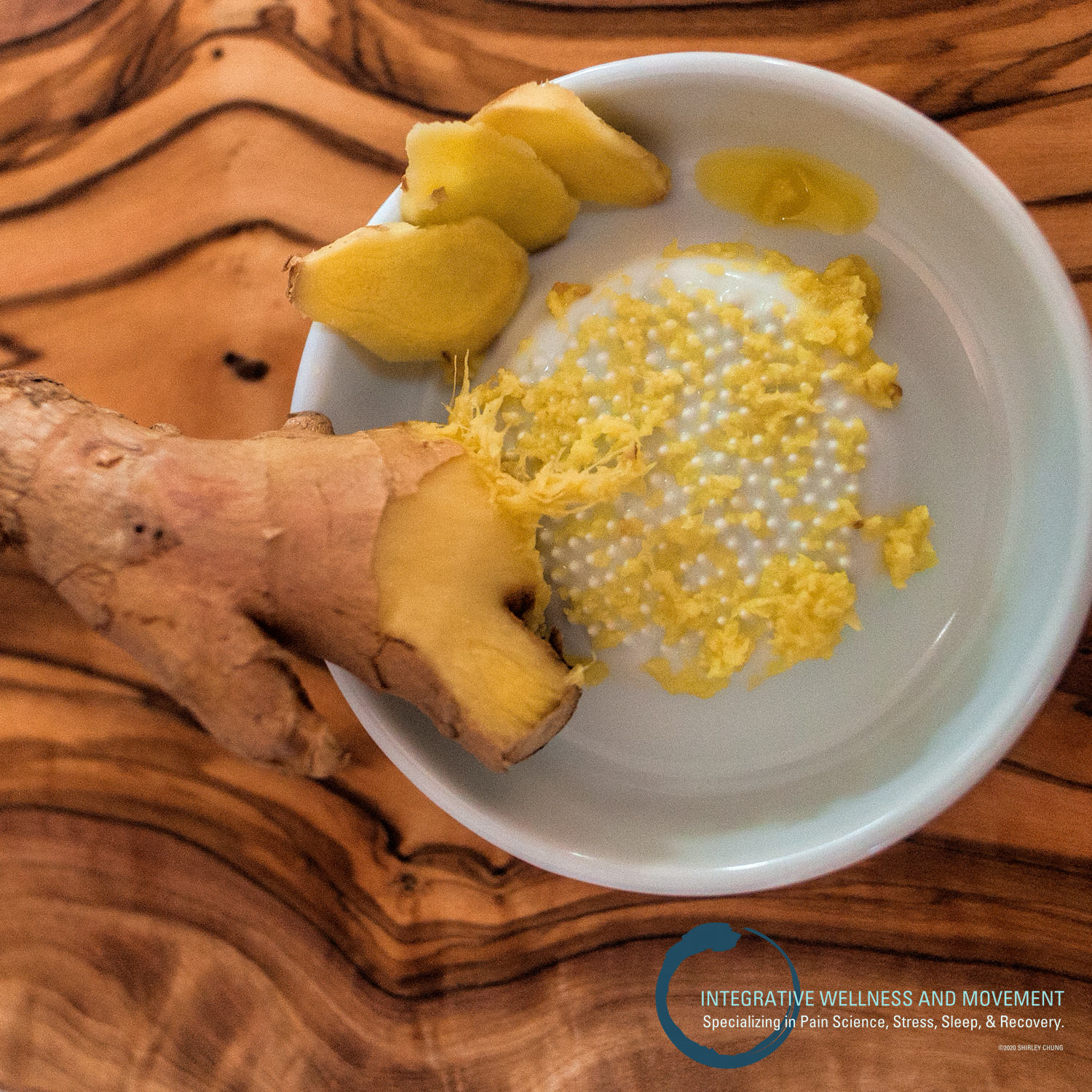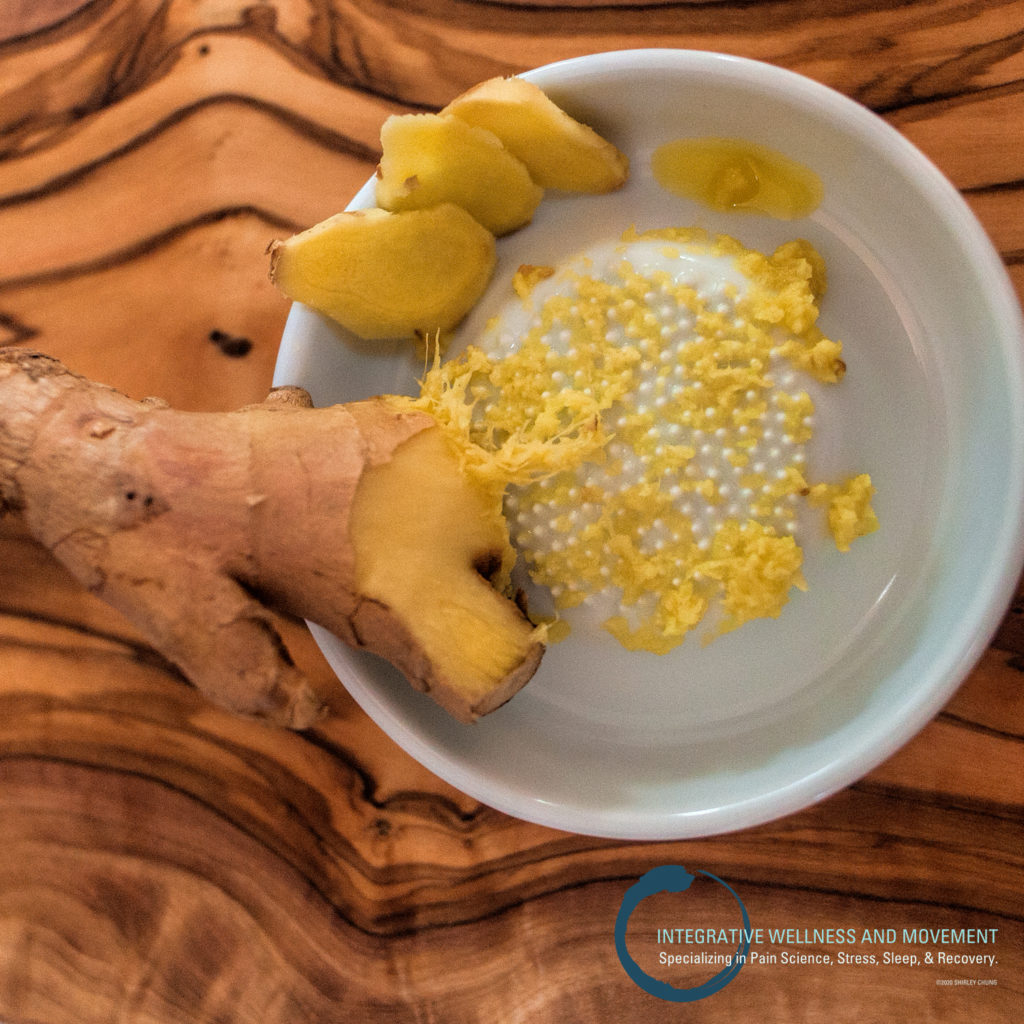
Zingiber officinale
This is the common ginger that is found in the grocery market and used for cooking. Ginger is a perennial flowering rhizome (“rootstalk”) plant. Rhizomes are below ground (subterranean) plant stems that can send out roots and shoots from its node–typically extending horizontally, but also able to grow vertically.
Habitat/Growing Information.
According to the U.S. Department of Agriculture, Zingiber officinale grows best in zones 9-12. This species of ginger may be grown indoors (potted) in the Pacific Northwest area, but it is a tropical plant. It would not survive the PNW outdoors. However, another species of ginger, Zingiber mioga, would do better in the PNW climate.
Plant it in the spring. This plant likes moist soil (well-draining, not water-logged) and the morning sun and/or light shade. While it likes sun, make sure the light is filtered or indirect. It likes heat and humidity. When the leaves die in the fall, it is ready to harvest. New ginger plants require 1-3 yrs of uninterrupted/undisturbed growth before they will flower. If planting in a pot, make sure it is deep and wide as this ginger spreads horizontally as well.

Parts utilized.
The rhizome itself is what you see in the stores. However, the flower petals and the leaves may also be used in cooking. The petals can be hard/tough but are flavorful. Chop them up very fine. You can use them to season food (e.g. add flavor to oil/sauce) and extract/filter them out before serving. The buds (before flowering) are more tender and edible in whole. The leaves may also be used, but can be tough. They have the same flavor as the root, but less intense. Chop them up fine and/or extract/filter them out before serving. The leaves may also be dehydrated, used as a garnish (fresh/dehydrated), and used in teas.

Properties.
Ginger has long been used in Chinese cooking and in Chinese medicine (ginger is the Yang). It has: antioxidant properties; vitamin C; Fe, Mg, Ma, Ca, P, K, Na; flavonoids; and phenolic compounds (Shahrajabian, Sun, & Cheng, 2019). Ginger has historically been used for: nausea; stomach cramps; motion sickness; morning sickness; anti-inflammatory; anti-hypertension; anti-edema; anti-cardiac disease; antibacterial; and anti-diabetic effects (Shahrajabian et al., 2019; Shidfar et al., 2015). Researchers are studying ginger’s active components: bisabolene, zingiberene, zingiberol (found in ginger oil); gingerol, shogaols, gingerdiol, gingerdione, paradol, alpha-zingiberene, curcumin, and beta-sequi-phellandrene (Shahrajabian et al., 2019; Shidfar et al., 2015).
Due to the problem of drug-resistant bacteria, scientists have been exploring more natural antibacterial means. Zingiber officinale has antibacterial properties (Islam, Rowsni, Khan, & Kabir, 2014). Islam et al. (2014) found that a soybean oil extract of ginger (a common method of food preparation in Bangladesh) exhibited antimicrobial properties against Escherichia coli, Pseudomonas aeruginosa, Staphylococcus aureus, Vibrio cholerae, Klebsiella species, and Salmonella species (Islam et al., 2014).
References
- https://wimastergardener.org/article/ginger-zingiber-officinale/
- https://gardenerspath.com/plants/herbs/how-to-grow-temperate-ginger/
- https://www.southernliving.com/plants/ginger
- https://www.gardenguides.com/13426903-can-you-use-the-leaves-of-the-ginger-plant.html
- http://www.missouribotanicalgarden.org/PlantFinder/PlantFinderDetails.aspx?kempercode=a763
- https://plants.usda.gov/core/profile?symbol=ZIOF
- https://www.cabi.org/isc/datasheet/57537
- https://medcraveonline.com/IJCAM/ginger-zingiber-officinale-a-mini-review.html
- https://homeguides.sfgate.com/ginger-plants-not-flower-71955.html
- https://www.theflowerexpert.com/content/aboutflowers/exoticflowers/gingers
- https://www.gbif.org/species/2757280
- http://www.botanicalauthentication.org/index.php/Zingiber_officinale_(rhizome)
- https://pfaf.org/user/Plant.aspx?LatinName=Zingiber+officinale
- https://plantvillage.psu.edu/topics/ginger/infos
- Islam, K., Rowsni, A. A., Khan, M. M., & Kabir, M. S. (2014). Antimicrobial activity of ginger (Zingiber officinale) extracts against food-borne pathogenic bacteria. International Journal of Science, Environment and Technology, 3(3), 867-871.
- Shahrajabian, M. H., Sun, W., & Cheng, Q. (2019). Clinical aspects and health benefits of ginger (Zingiber officinale) in both traditional Chinese medicine and modern industry. Acta Agriculturae Scandinavica, Section B—Soil & Plant Science, 69(6), 546-556.
- Shidfar, F., Rajab, A., Rahideh, T., Khandouzi, N., Hosseini, S., & Shidfar, S. (2015). The effect of ginger (Zingiber officinale) on glycemic markers in patients with type 2 diabetes. Journal of complementary and integrative medicine, 12(2), 165-170.
